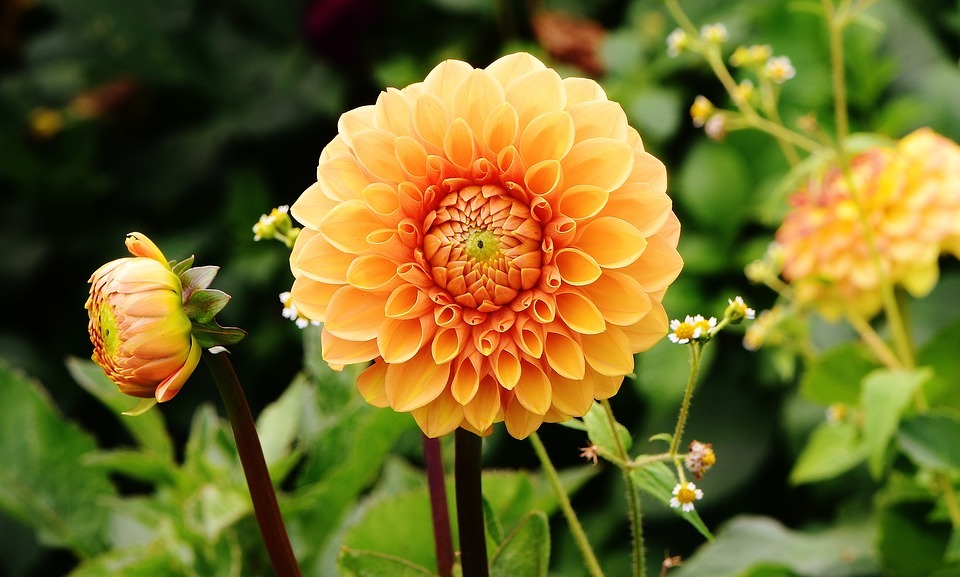Growing and planting dahlias is not that difficult. Dahlias are perennial flowers that can thrive almost everywhere, and they only need a little to no attention to maintain. You can plant them during spring, and we assure you that you can enjoy months of seeing big and brightly-colored blossoms. But to make sure that you are doing the right procedure in planting a dahlia plant, we are here to give you 8 helpful tips so that you enjoy the very best results of having a dahlia in your garden.
Be Familiar with Tubers – Take note that dahlias come from buds which form during fall. These buds are often located at the base of the stem, which is just above the tubers. But what are tubers? For starters, tubers do not produce sprouts, but instead, they act as food storage vessels, which can help the dahlia plant fuel its early growth. You can buy dahlias in two forms: as single tubers that have a bud attached to it or the one that has a clump of tubers that goes around a stem
Timing is Important – If you are going to plant the tubers in your garden, we suggest that you until the soil has warmed to 60 degrees Fahrenheit. This is because dahlias do not grow well in cold soil, plus foliage is susceptible to frost. If you happen to live in a place with a cold climate, then you can plant dahlias indoors at least 4 to 6 weeks before the last frost. All you have to do is fill one or two-gallon pots with moist growing mix. After that, you plant the dahlia tubers along with their stem or sprouts. Make sure that they are facing up then cover them with about two inches of soil. We also suggest that you should put these pots in a warm place that receives good light and water them sparingly. Remember to water them regularly until they are several inches tall. You can put them outdoors after frost has passed.
Know Where and How to Plant – Dahlias bloom the best when they are placed in well-drained and fertile soil, and in a location that receives full sun. Dahlias should be planted at least 15 inches apart from their center to center. And we suggest that you loosen the soil to a depth of at least 12 inches.
Watering and Fertilizing – Dahlias also thrive very well when they are given a consistent supply of water. If you are able to do deep irrigation, then it is much better because it helps directs moisture to the root zone of the plant while keeping its foliage dry. If you want to hand-water your plants, then it’s best to water your dahlias deeply at least once a week. You can mulch around their base in order to reduce moisture loss and keep the roots of your dahlias cooler.
Insects and Disease – You can protect your dahlias from butterflies, bees, and other pollinators by not using pesticides. You have to keep dahlia foliage as dry as possible by watering them deeply once or twice every week. This way, you will allow the top inch of soil to dry out in between watering. We also advise that you clip off at least 12 inches of foliage to promote good air circulation.
Be Generous – Remember that dahlias are one of the world’s best cut flowers, and the best part is it only takes just a few stems of it in order to make a lovely bouquet. Keep in mind that harvesting flowers are also suitable for the plants because it encourages them to keep on blooming month after month. That is why don’t hesitate to cut often and share the beauty generously. Brighten your lover, friends, families, and neighbors day by giving them your beautiful homegrown dahlias.
Importance of Pinching and Staking – When you notice that your dahlias are already 12 inches tall, you can pinch off the top part of the main stem. This procedure will help the plant stimulate lateral branching, which can result in more flowers and stems.

